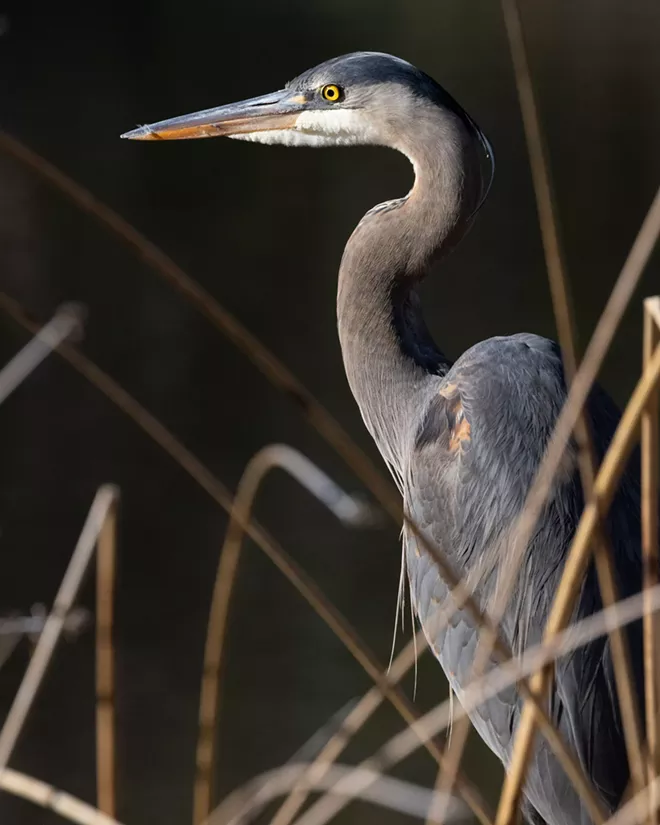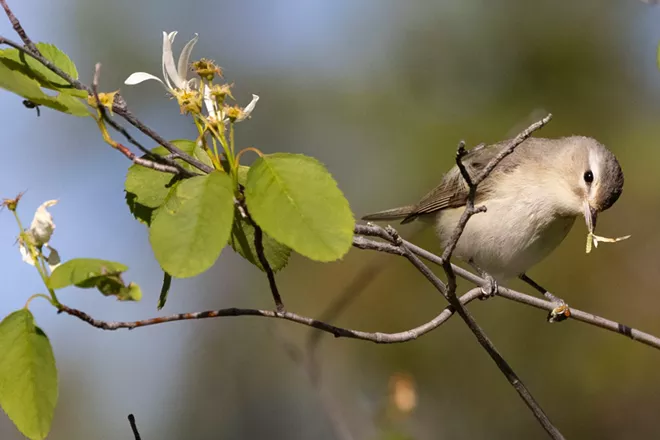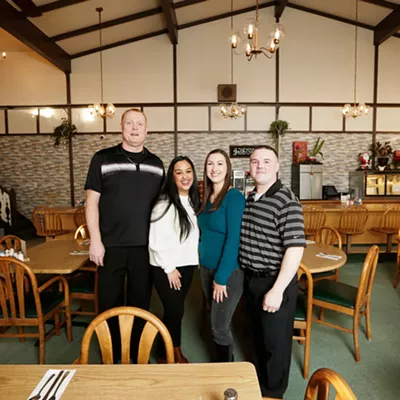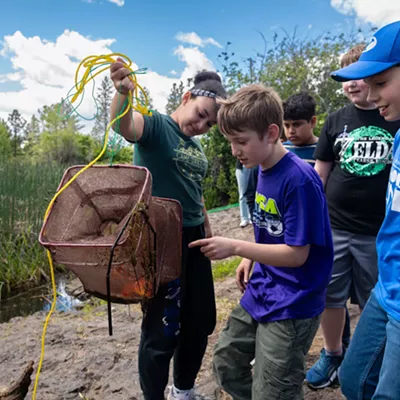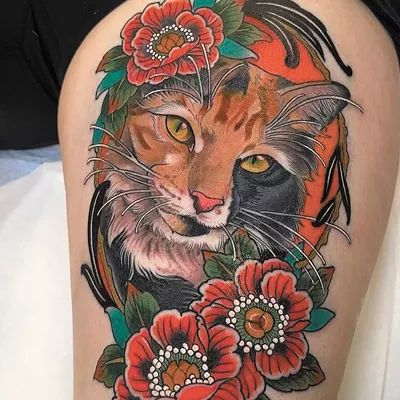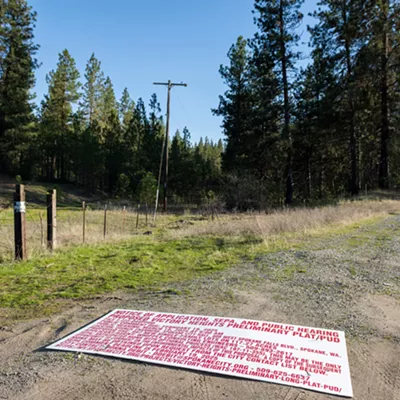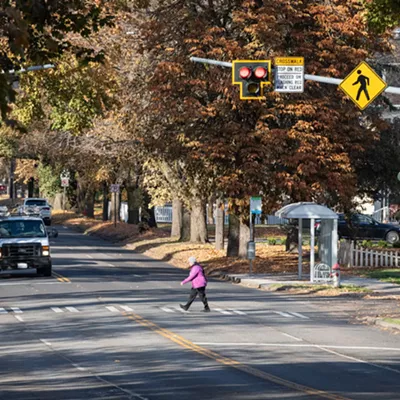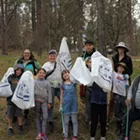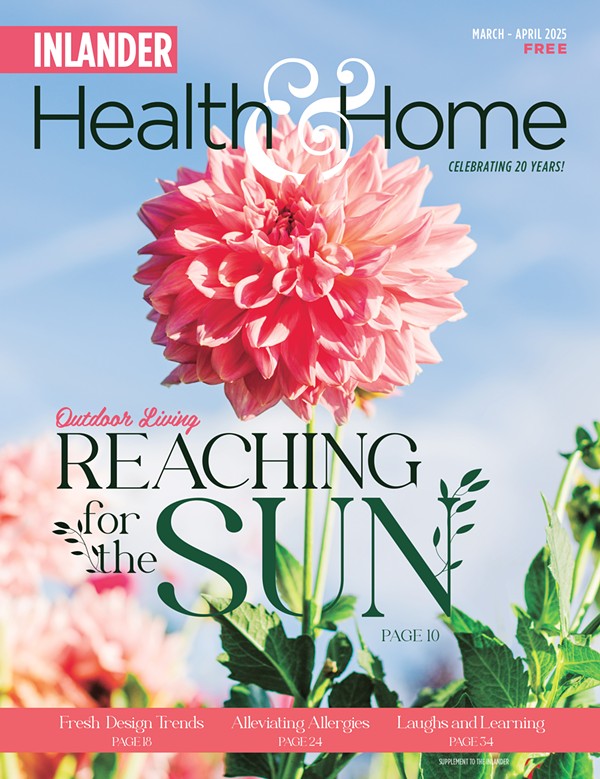From her home, Sheila Evans — an avid birder, photographer and painter — can walk to Lincoln Park, one of the city's oldest parks, to photograph birds that she normally only finds at the 18,000-acre Turnbull National Wildlife Refuge in the Channeled Scablands near Cheney.
"So far that I'm aware of, I've identified like 42 species of birds that I've seen there, and probably at least five of those are ones I've never seen before or a few of them I've never seen anywhere else," she says of the 51-acre park.
Evans regularly spots calliope hummingbirds, lazuli buntings and a variety of sparrows at Lincoln Park, in addition to great blue herons standing by the pond and merlin falcons darting through the trees.
It's a quiet spot in an otherwise typical city neighborhood. So typical, in fact, that city officials are again considering it as a site for a dog park, an amenity that — unlike many other cities — Spokane struggles to provide.
Searching for a new dog park location on the South Hill seems like a simple enough task. The original unofficial dog park on the South Hill was displaced due to its location at the construction site of the future Carla Peperzak Middle School on East 63rd Avenue. The only other dog park south of the Spokane River is the SpokAnimal Dog Park at Highbridge Park.
But when Lincoln Park in east Spokane was brought into consideration for a 7.5-acre dog park, Evans and other nearby residents rallied to protect it. One of Evans' concerns with the addition of a dog park to the field at the south end of Lincoln Park was that the development would increase noise levels within the park, scaring off wildlife and possibly bringing in seeds from invasive plant species.
With neighborhood opposition, the Spokane Park Board dropped the plan in October and resumed hunting for another location. But in January, Lincoln Park was brought back to the table.
The new plan for a dog park was coupled with a plot of land adjacent to the park that would be acquired and categorized as natural land, allowing the Spokane Parks Department to preserve it as a nature and wildlife sanctuary.
Residents of the surrounding Rockwood, Lincoln Heights and East Central neighborhoods were still opposed to the proposition.
"The problem with that was the lands were not equal," says Kara Odegard, a member of the neighborhood group Spokane Urban Nature. "It was, 'Hey, we're going to destroy this completely untouched native ecosystem, but we also are going to give you this previously disturbed area and then promise not to develop it.' It wasn't the same."
Spokane Urban Nature formed with the primary goal of providing permanent protection for Lincoln Park and some other vital green spaces in Spokane, as they realized that there isn't a clear process for providing long-term protection to these areas.
According to Garrett Jones, director of Spokane Parks and Recreation, the group would need to work with the city park board to reassess its planning processes and determine how it could provide additional protection to locations that the community is advocating for.
"The south end of Lincoln Park is a rare piece of undisturbed land on the South Hill," says Karen Mobley, a former city arts official and member of Spokane Urban Nature. "It's home to all sorts of unique creatures: ground nesting birds, water birds, unusual and unique lichens, wildflowers, there's also a lot of coyotes there."
Lincoln Park serves as an important reminder of what Spokane's native plant species and ecosystems look like.
"It's a small layer of soil over a basalt rock outcropping where you get all these beautiful wildflowers that pop up in the spring, and you would think that this is an uninhabitable piece of soil, but there's so much life that's happening within this," says Odegard. "Personally, I feel that this basalt outcropping and the wildflowers that we call the shrubsteppe landscape is as much of a defining piece of our identity as the Spokane River."
Shrubsteppe is an arid ecosystem found in Eastern Washington composed of sagebrush, lichens and, depending on the area's precipitation levels, flowering plants.
While the Washington Department of Fish and Wildlife has marked Lincoln Park as a presumptive shrubsteppe location with the use of their Priority Habitat and Species satellite mapping system, habitat biologist Kile Westerman says the system isn't always accurate. Still, it provides Fish and Wildlife with important information when looking at potential sites for development.
He also states that about 80 percent of the historic shrubsteppe habitats in the state have been lost or degraded from development projects, resulting in shrubsteppe being added to their Fish and Wildlife of priority habitats.
While Spokane Urban Nature wants to conserve Lincoln Park and its unique ecosystem, they recognize the need for a new dog park and plan to help the park board find a suitable location.
"Somebody said to me recently, you must not like dogs, and I was like, actually, this isn't about liking dogs," says Mobley. "It's about making sure that we take good care of these unique and special places that remain in our communities." ♦

